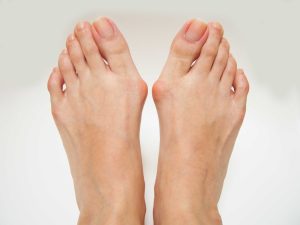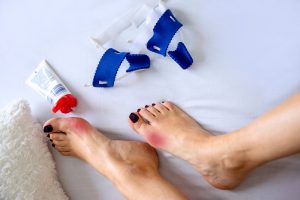
Why Do Bunions Form?
Bunions are a common foot deformity. A painful, bony bump develops at the big toe joint, due to different causes and risk factors.


Bunions are a common foot deformity. A painful, bony bump develops at the big toe joint, due to different causes and risk factors.

Bunions are a bony prominence at the foot that can be painful and sore. There are many ways one can relieve bunion symptoms.

Minimally invasive bunion surgery is an option to correct bunions with fewer complications and faster recovery, as compared to open bunion surgery.

East Asians (EA) have worse metabolic health outcomes compared to other ethnic groups. Gut Microbiota may be a factor. Learn more
This article first appeared in Orthokinetics Blog, and has been edited for clarity. Why are ankle injuries so common? The ankle joint is where the
One of the most common problems presented to primary care clinics is ankle sprains. Sprains can happen when you overstretch or twist a muscle. This is especially if you skip warming up before exercising. Fortunately, after 2 weeks, most people will recover from ankle sprains on their own.
The Achilles tendon is one of the body’s largest tendons. It is a strong fibrous cord that connects the muscles of the back of your calf to your heel bone. The Achilles tendon is important in our daily movements, such as tiptoeing and running. While tendon tissues are strong, they are inflexible. If the Achilles tendon is overstretched, it can lead to pain and injury.
Bunions are a common foot deformity. A painful, bony bump develops at the big toe joint, due to different causes and risk factors.
Bunions, or hallux valgus, are a common foot deformity. In this second part our 3-part series with Dr Tan Ken Jin, Orthopaedic surgeon of Orthosports,
Bunions, or hallux valgus, are a common foot deformity. In the third and last part our 3-part series with Dr Tan Ken Jin, Orthopaedic surgeon
Diabetic foot infection is due to infection of the soft tissue or bone below the ankle bone. It is estimated that if you have diabetes,
Proper footwear is important not only for comfort but also for ankle & foot health! Learn how to pick the right shoes for healthier feet.
Along with various types of bacteria, fungi exist all over your body. When there is an overgrowth of fungi in your nails, a fungal nail
Fungal infection of the nail is termed onychomycosis. Different fungal organisms may infect the nails with different presentations affecting any part of the nail including
Gout is a common and complex form of arthritis that affects people of all age groups. It is characterised by severe pain, swelling and inflammation




